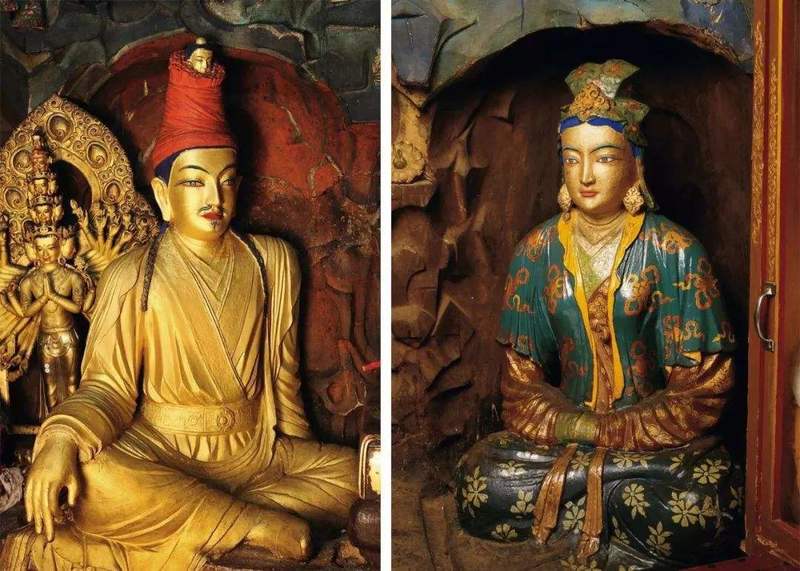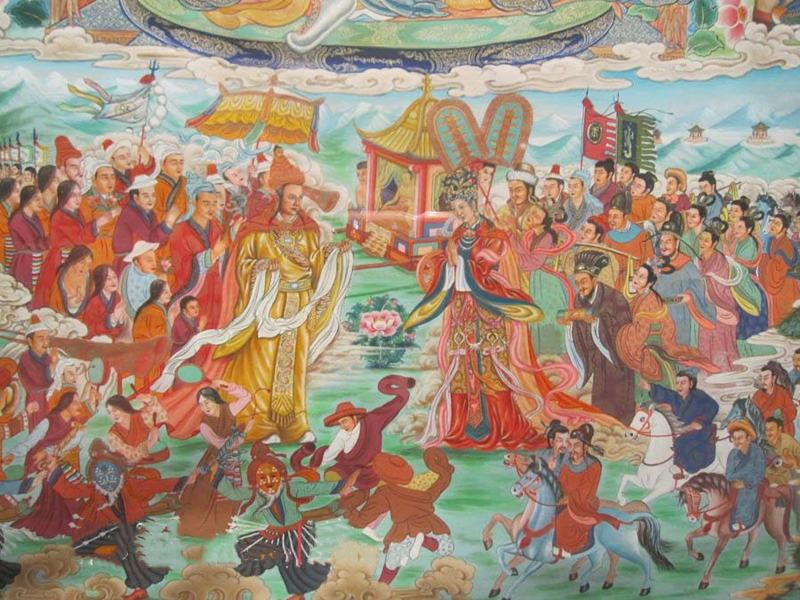Princess Wencheng
- by Catherine
- Last Updated: 2023-09-26
More than 1300 years ago, Princess Wencheng(625-680) of the Tang Dynasty left the prosperous capital Chang 'an (northwest of today's Xi 'an, Shanxi Province) and traveled about 3,000 kilometers to the west. After many difficulties and dangers, she arrived in Tubo and married the King - Songtsan Gambo. The story of Princess Wencheng and Songtsan Gambo, as well as the achievements in promoting Tibetan culture, are still widely spread among the Han and Tibetan people in the form of murals, dramas, folk songs, and legends ever since.
Cultural Relics Related to Princess Wencheng
Specially built for Princess Wencheng, Potala Palace has a total of 1000 rooms and is magnificent. After two expansions in later generations, the present scale was formed. It is in the preservation of a large number of the rich content of the murals. These murals have sophisticated compositions, lifelike characters, and bright colors. Among them, including the scene of the difficulties and dangers Princess Wencheng encountered along the way to Tibet, as well as the scene of a warm welcome when she arrived in Lhasa. Princess Wencheng presided over the construction of Ramoche Temple and Jokhang Temple. It is said the willow trees outside the Jokhang Temple were planted by Princess Wencheng, which has become the famous Tang willow of later generations. The statue of Buddha brought by Princess Wencheng is still enshrined in Jokhang Temple and worshipped by the Tibetan people and all the Buddhist pilgrims all over the world. Today, in the Potala Palace and Jokhang Temple of Lhasa, there are also statues of Princess Wencheng, which are very exquisite and vivid. By the Lhasa River at night, "Princess Wencheng" large-scale live play tells the story of this interracial matrimony for peace-making.

The Story of Princess Wencheng and Songtsan Gambo
Songtsan Gambo is a hero in Tibetan history. He unified Tibet and established the Tubo kingdom. From 634 A.D., Songtsan Gambo repeatedly asked for peace and marriage with the Tang Dynasty. Till 640 A.D., Tang Taizong, the king of the Tang Dynasty, responded to the requirement and finally agreed to marry Princess Wencheng to him, the daughter of Tang clan relatives. Songtsan Gambo's long-held wish for many years was realized. He was very happy and led his army to Baihai (today's Maduo county in Qinghai province) to welcome Princess Wencheng in person and return to Lhasa with her. After that, he built Potala Palace for the princess to live in.

Bridging the Different Cultures
Princess Wencheng's entry into Tibet not only consolidated the western border defense of the Tang Dynasty but also greatly strengthened the ties between the Tang Dynasty and the Tubo Kingdom. Songtsan Gambo was enamored of the Central Plain's culture. He took off his felt coat and changed to wear silk, and sent the children of Tubo nobles to Chang'an to study Chinese culture. After Songtsan Gambo married Princess Wencheng, in later more than 200 years, there were few wars between Tubo and Tang Dynasty, and contacts between the two countries were very close.
Princess Wencheng even brought the culture of the Han to Tibet. She is a devout Buddhist. She brought Buddhist pagodas, scriptures, and statues into Tibet. She also designed and assisted in the construction of Jokhang Temple and Ramoche Temple. From then on, Buddhism began to spread in Tibet. The literati who came to Tibet with Princess Wencheng helped to sort out the relevant documents of Tubo, recorded the important conversation between Songtsan Gambo and ministers, and made the politics of Tubo go towards normalization. The farming tools and professionals that were taken by the princess taught the local people farming techniques, greatly improving the quality and yield of the land. The maids of the princess taught Tibetan women the skills of weaving and embroidery.
Princess Wencheng, loved by her husband and Tibetan people, made historic contributions in promoting economic and cultural exchanges, enhancing the close, friendly, and cooperative relationship between Tang and Tibet. Until today, she's still been appreciated and admired by Tibetan people.
Related Articles
- Nepal Currency - Money and Rupee Exchange Rate
- Milarepa: A Spiritual Journey from Revenge to Enlightenment
- Shambhala: Mystical Utopia of Tibetan Buddhism
- Trandruk Monastery
- Guge Kingdom (Tsaparang)
- Namseling Manor
- Wenshu Monastery
- Forbidden City
- Lhoka Travel Guide
- Shuba Ancient Fort
Email response within 0.5~24 hours.


